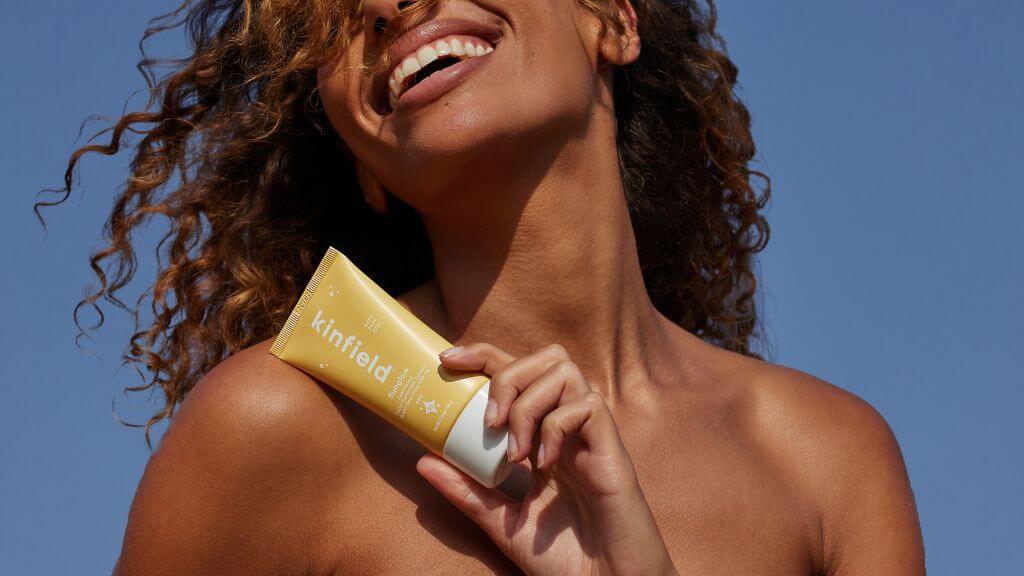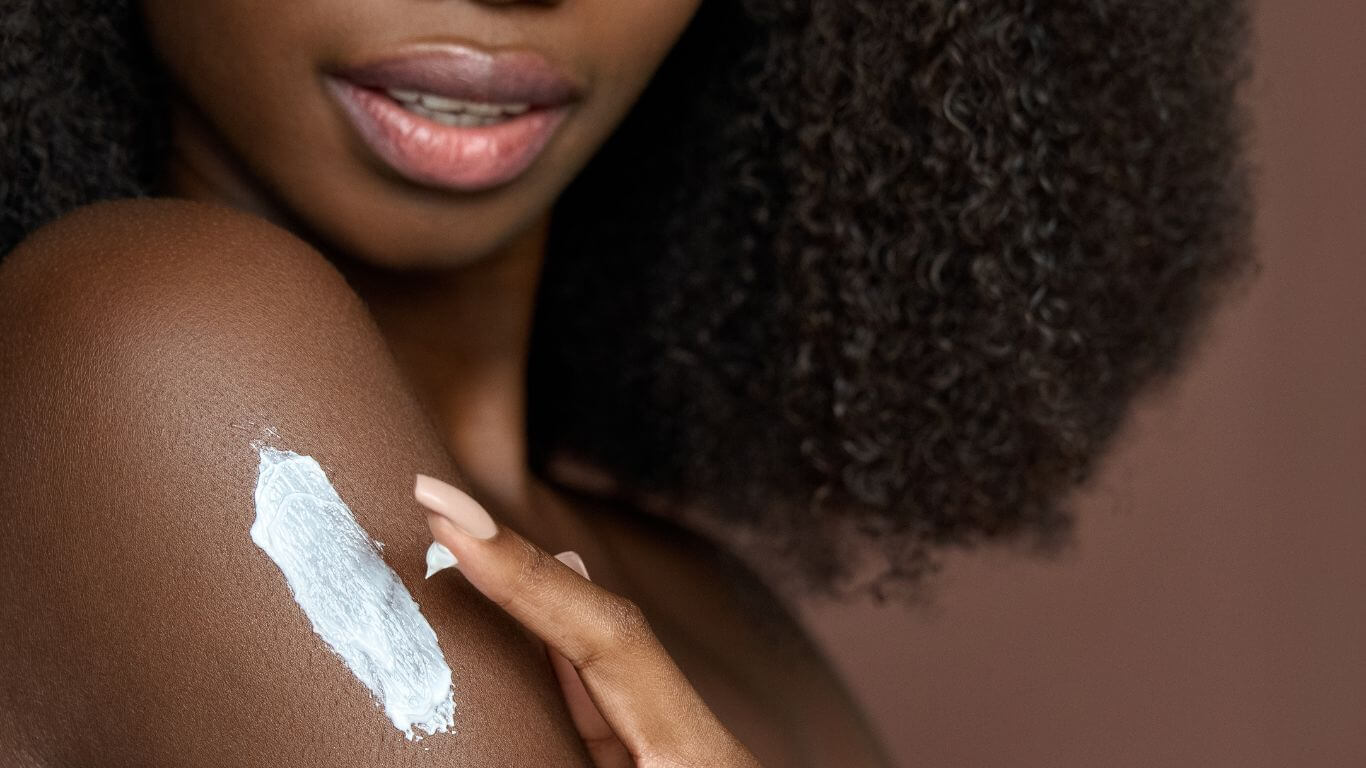An interview with Registered Nutritional Consulting Practitioner and Professional Chef Kimberly Banting of Flourish Nutrition.
Battling Rosacea can be a frustrating and embarrassing experience. It is easy to feel overwhelmed, especially if you are facing a flare up for the first time. Take a deep breath and rest assured you are not alone. According to the National Rosacea Society1 an estimated 16 million Americans live with this emotionally frustrating skin condition.
It is no secret that stress, diet and lifestyle choices can wreak havoc on our skin so we decided to seek professional help to find out how small lifestyle and diet changes may help you reduce your Rosacea symptoms and regain a radiant healthy complexion.
Our expert today is Kimberly Banting of Flourish Nutrition in Canada. Kim is a Registered Nutritional Consulting Practitioner, Holistic Health Practitioner and Professional Chef. In this interview we discuss the possible causes of rosacea and small changes you can make today that may help reduce your symptoms and give your skin renewed vitality.
What is Rosacea?
Exactly what is Rosacea? And why do you have it? According to Kim, Rosacea is the “Chronic inflammation of the skin where redness appears on the nose and cheeks and skin may also be covered in pimples. Rosacea is vascular in nature, which means it is related to your blood vessels and not oily skin.”
According to the National Rosacea Society, Rosacea often goes undiagnosed because the most common initial symptoms – flushing and persistent redness – are often overlooked or mistaken for something else, such as sunburn
While anyone can suffer from Rosacea “fair skinned women between the ages of 25 and 70 years” are the most frequent sufferers.
In fact, a survey conducted by the National Rosacea Society2, showed 7 out of 10 first developed rosacea when they were in their 30s or older. Only 1 in 10 were under 20.
Rosacea is more frequently diagnosed in women. It is also believed that rosacea may run in families, and may be especially prevalent in people of northern or eastern European descent.
In state-by-state estimates, Maine, Rhode Island, New Hampshire and Connecticut are shown to have the greatest prevalence of rosacea, each with over 10 percent of their adult populations. Meanwhile, Hawaii scored the lowest incidence at 2.7 percent3
What is the main cause of Rosacea?
Unfortunately the causes of Rosacea are not clearly understood. Why do you have Rosacea but your best friend doesn’t? Kim suggests several factors may play a role. These include:
- Helicobacter pylori (H. Pylori) – a type of bacteria
- Low stomach acid
- Food allergies or sensitivities
- B vitamin deficiencies
- Poor digestive health
- Alcoholism
- Hot flashes
- Skin infections
Take a look at this list – if any of these apply to your situation they may be contributing to or aggravating your Rosacea. All of these things are sign your body is out of balance. By correcting these imbalances you may be able to better control your symptoms. Not sure how to proceed? It may be worth discussing your symptoms with a professional who can help you identify imbalances in your system and give you a proper roadmap for regaining your health.
Understanding your triggers
Sometimes there is no apparent reason for a flare-up. Oftentimes, however, certain types of food or even the weather can trigger a reaction. According to Kim, the most common triggers for a flare up include:
- Emotional stress
- Hot drinks
- Spicy foods
- Alcohol
- Exercise
- Extremely hot or cold temperatures

What can I do today to treat my Rosacea naturally?
While there is no known cure for Rosacea, Kim explains there are several steps you can take to help prevent or minimize your Rosacea symptoms naturally:
1. Reduce your exposure to your triggers
While this is sometimes easier said then done – keep in mind that constant exposure to your triggers will keep your skin irritated.
Try eliminating or greatly reducing your exposure to extremes in temperature (wash in lukewarm water), long-term direct sunlight (use a safe sunscreen daily), hot liquids like coffee, tea, soups, alcohol and spicy foods you can greatly reduce or minimize some of your symptoms.
2. Eliminate inflammatory foods from your diet
Inflammatory foods can be incredibly detrimental to your skin and overall complexion and are believed to contribute to your Rosacea. Kim suggests we be particularly mindful of the usual culprits like:
- Sugary foods
- Refined and processed foods like breads, cakes, pastries and most things in a package.
- Food containing trans fats or harmful fats such as margarine, shortening, vegetable oil and fried foods should be avoided for their inflammatory properties.
Kim also recommends eliminating or severely reducing the amount of dairy products you consume, at least temporarily.
Kim explains “Dairy is very difficult for most people to digest and is often found to be the culprit when inflammatory skin disorders appear.”
4. Nourish and heal your skin
It’s no secret that a proper diet is needed for a healthy body. But what can it do for your skin and your fight against Rosacea?
Kim says, “Along with eliminating the harmful foods that may be contributing to your rosacea, a healthy diet must be consumed in order to cleanse the body of toxins and nourish and heal the skin.” A healthy diet will provide you with all of the essential nutrients your body needs to fight inflammation caused by Rosacea and help maintain healthy skin.
To kick-start your fight against inflammation - Kim has provided one of her delicious recipes to nourish and heal your skin. The following recipe contains plenty of B vitamins that are often deficient in people with rosacea, vitamin C that helps to fight inflammation as well as zinc, which is also important to maintain healthy skin. Find the recipe at the bottom of this post.
5. Simplify your skin care routine
Use extra care when selecting skincare products. It can be challenging to find a skincare routine that won’t aggravate your skin. There is no single ‘skin type’. Rosacea sufferers can have dry, flaky skin, normal, oily skin, or even combination skin. You also likely have very sensitive skin.
Daily sun protection is also very important, especially if you have rosacea. Sun exposure is one of the top triggers for a rosacea flare up.
Most importantly – be kind to yourself. Lets face it – life has a habit of getting in the way of us making the lifestyle or diet changes we know will help us. It is easy to feel overwhelmed. Remember even small changes can help improve your skin and overall complexion.
Read next: a simple skincare routine for rosacea
This simple routine helps take the guesswork out of caring for your sensitive skin.
1 National Rosacea Society (rosacea.org)
2 Survey Defines Progression of Rosacea, National Rosacea Society
3 Where Is Rosacea Worst? Map Points to Northeast, National Rosacea Society
Cauliflower and Broccoli Salad
½ head cauliflower, cut into bite sized florets
½ head broccoli, cut into bite sized florets
1 medium carrot, peeled and shredded
1 cup apples, diced
1 tbsp chia seeds
½ cup goji berries
2/3 cup raw pumpkin seeds
2 tbsp orange juice
4 tbsp organic apple cider vinegar with “Mother”
½ cup extra virgin olive oil
sea salt and pepper to taste
1 tsp each fresh tarragon, parsley and cilantro, finely chopped
- Combine the chopped cauliflower, broccoli, carrot and apples in a large bowl. Toss until evenly distributed.
- Toss in the chia seeds, goji berries and pumpkin seeds.
- In a small dish or measuring cup, whisk together the orange juice, cider vinegar, olive oil, salt, pepper and herbs. Pour over the salad and gently toss to evenly coat.
Will keep in the refrigerator for 3-4 days.
Kim Banting is a Holistic Nutritionist from Ontario, Canada. She is the owner Flourish Nutrition and specializes in women’s health issues, particularly hormone balance and gut health.
This article is for informational purposes only. This article is not, nor is it intended to be, a substitute for professional medical advice, diagnosis, or treatment and should never be relied upon for specific medical advice. If you are under the care of another healthcare provider, it is important that you contact your other healthcare providers and alert them to your use of nutritional supplements. Holistic nutritional consulting may be a beneficial adjunct to more traditional care, and it may also alter your need for medication, so it is important you always keep your physician informed of changes in your nutritional program.






